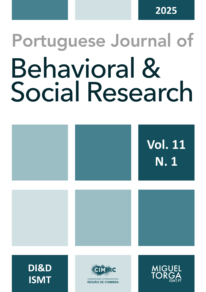The voice of women: Perceptions of obstetric violence in Southern Brazil
DOI:
https://doi.org/10.31211/rpics.2025.11.1.369Keywords:
Women's Rights, Parturition, Women's Health, Violence Against Women, Obstetric Violence, Qualitative ResearchAbstract
Background: Obstetric violence is described as the imposition of hospital practices that disregard women’s autonomy during the childbirth process. Objective: To understand women's perceptions of obstetric violence in a municipality in southern Brazil. Method: This is a descriptive, qualitative study conducted between July and September 2024 with 20 women aged 18 years or older, who had given birth within the previous two years and were not in the puerperal period. Data collection was carried out through semi-structured interviews, which were audio-recorded, transcribed using Happyscribe software, and subjected to content analysis. Results: Three thematic categories emerged: perception of obstetric violence, false perception of non-obstetric violence, and satisfaction with adequate care. Participants’ narratives revealed dehumanizing practices, such as the Kristeller maneuver, pubic hair removal, food restriction, non-consensual interventions, and violations of autonomy during childbirth. Some women did not initially identify these practices as violent, reflecting a cultural normalization of unnecessary interventions. Conclusions: Obstetric violence is perpetuated by the normalization of abusive practices in hospital settings and by the lack of awareness regarding women's rights. Humanizing care is essential to reduce such practices, ensuring autonomy and respect for women's choices during childbirth.
Downloads
References
Annborn, A., & Finnbogadóttir, H. R. (2022). Obstetric violence a qualitative interview study. Midwifery, 105, Artigo 103212. https://doi.org/gnq8kh
Araújo, A. A. C., Nery, I. S., Brito, M. P. M., Mesquita, M. K. R., & Santos, J. D. M. (2021). Manobra de Kristeller: Há benefício nesta técnica? Revista de Pesquisa Cuidado é Fundamental Online, 13, 276–281. https://doi.org/ppk5
Bittencourt, S. D. de A., Vilela, M. E. de A., Marques, M. C. de O., Santos, A. M. dos, Silva, C. K. R. T. da, Domingues, R. M. S. M., Reis, A. C., & Santos, G. L. dos. (2021). Atenção ao parto e nascimento em maternidades da rede cegonha/Brasil: Avaliação do grau de implantação das ações. Ciência & Saúde Coletiva, 26(3), 801–821. https://doi.org/ppk6
Ferrão, A. C., Sim-Sim, M., Almeida, V. S., & Zangão, M. O. (2022). Analysis of the concept of obstetric violence: Scoping review protocol. Journal of Personalized Medicine, 12(7), Artigo 1090. https://doi.org/g8rm4k
Garcia, L. M. (2023). Obstetric violence in the United States and other high-income countries: An integrative review. Sexual and Reproductive Health Matters, 31(1). https://doi.org/ppk7
Garcia, L. M., Jones, J., Scandlyn, J., Thumm, E. B., & Shabot, S. C. (2024). The meaning of obstetric violence experiences: A qualitative content analysis of the break the silence campaign. International Journal of Nursing Studies, 160, Artigo 104911. https://doi.org/ppk8
Gebeyehu, N. A., Adella, G. A., & Tegegne, K. D. (2023). Disrespect and abuse of women during childbirth at health facilities in Eastern Africa: Systematic review and meta-analysis. Frontiers in Medicine, 10. https://doi.org/gth69p
Gomes da Silva, J. A., Barreto, L. P. T. F., & Lima, H. S. C. (2005). Lei no 11.108, de 7 de abril de 2005. Altera a Lei nº 8.080, de 19 de setembro de 1990, para garantir às parturientes o direito à presença de acompanhante durante o trabalho de parto, parto e pós-parto imediato, no âmbito do Sistema Único de Saúde – SUS. http://bit.ly/4kaYwjc
Kahalon, R., & Klein, V. (2024). Unmasking the role of dehumanization in obstetric violence. Psychology of Violence, 15(1), 21–31. https://doi.org/ppmb
Leal, M. do C., Bittencourt, S. de A., Esteves-Pereira, A. P., Ayres, B. V. da S., Silva, L. B. R. A. de A., Thomaz, E. B. A. F., Lamy, Z. C., Nakamura-Pereira, M., Torres, J. A., Gama, S. G. N. da, Domingues, R. M. S. M., & Vilela, M. E. de A. (2019). Avanços na assistência ao parto no Brasil: Resultados preliminares de dois estudos avaliativos. Cadernos de Saúde Pública, 35(7). https://doi.org/c8p9
Madeira, D. F. P., Queiroz, M. L. S., & Toledo, R. L. (2020). Obstetric violence: The relationship between the violation of the right to humanized obstetric care and patriarchy. Revista Gênero & Direito, 9(4), 83–123. https://bit.ly/3SpoLX7
Maung, T. M., Mon, N. O., Mehrtash, H., Bonsaffoh, K. A., Vogel, J. P., Aderoba, A. K., Irinyenikan, T. A., Balde, M. D., Pattanittum, P., Tuncalp, Ö., & Bohren, M. A. (2022). Women’s experiences of mistreatment during childbirth and their satisfaction with care: findings from a multicountry community-based study in four countries. BMJ Global Health, 5(Suppl 2), Artigo e003688. https://doi.org/g6bgvm
Mendes, J., Santos, A. P. S., & Tavares, M. (2022). Perceções da violência obstétrica pelas parturientes e profissionais de saúde: uma revisão scoping. Revista Portuguesa de Investigação Comportamental e Social, 8(2), 1–15. https://doi.org/mxrt
Mufandaedza, A., & Chiweshe, M. K. (2021). An analysis of obstetric violence among low-income urban women: A case study of mabvuku hospital in Harare, Zimbabwe. Agenda, 35(3), 24–35. https://doi.org/gscjbs
Nascimento, D. E. M. do, Barbosa, J. C., Isaías, B. B., Nascimento, R. B. H., Fernandes, E. M., Neto, R. T. de L., & Rodrigues, M. P. de F. (2022). Vivências sobre violência obstétrica: Boas práticas de enfermagem na assistência ao parto. Nursing (São Paulo), 25(291), 8242–8253. https://doi.org/ppmc
Nações Unidas. (2024). Objetivos de Desenvolvimento Sustentável. https://bit.ly/3FsLRJo
Oliveira, P. S. de, Couto, T. M., Gomes, N. P., Campos, L. M., Lima, K. T. R. dos S., & Barral, F. E. (2019). Best practices in the delivery process: Conceptions from nurse midwives. Revista Brasileira de Enfermagem, 72(2), 455–462. https://doi.org/ppmd
Paula, E. de, Alves, V. H., Rodrigues, D. P., Felicio, F. de C., Araújo, R. C. B. de, Chamilco, R. A. da S. I., & Almeida, V. L. M. (2020). Obstetric violence and the current obstetric model, in the perception of health managers. Texto & Contexto - Enfermagem, 29. https://doi.org/ppmf
Salter, C. L., Olaniyan, A., Mendez, D. D., & Chang, J. C. (2021). Naming silence and inadequate obstetric care as obstetric violence is a necessary step for change. Violence Against Women, 27(8), 1019–1027. https://doi.org/ppmg
Samaritter, M. G., Herring, J., & Pickles, C. (2024). The shadowy boundaries of obstetric violence. Journal of Gender-Based Violence, 8(3), 302–311. https://doi.org/ppmh
Smith-Oka, V., Rubin, S. E., & Dixon, L. Z. (2022). Obstetric violence in their own words: How women in Mexico and South Africa expect, experience, and respond to violence. Violence Against Women, 28(11), 2700–2721. https://doi.org/g6jkzf
World Health Organization. (2014). Prevention and elimination of abuse, disrespect and mistreatment during childbirth in health institutions. World Health Organization. https://bit.ly/3SSYX5P
World Health Organization. (2018). WHO recommendations: intrapartum care for a positive childbirth experience. World Health Organization. https://bit.ly/3YYbnwP
World Health Organization. (2021). Violence against women prevalence estimates, 2018: Global, regional and national prevalence estimates for intimate partner violence against women and global and regional prevalence estimates for non-partner sexual violence against women. World Health Organization. http://bit.ly/3H8aBqP
Zampas, C., Amin, A., O’Hanlon, L., Bjerregaard, A., Mehrtash, H., Khosla, R., & Tunçalp, Ӧzge. (2020). Operationalizing a human rights-based approach to address mistreatment against women during childbirth. Health and Human Rights, 22(1), 251–264. https://bit.ly/43titL6
Downloads
Published
How to Cite
Issue
Section
License
Copyright (c) 2025 Matheus de Oliveira Sobrinho Ferreira, Ana Carolina Conartioli, Andressa Larissa Dias Müller de Souza, Pamela Eloisa Palma Tasca, Sara Wust Beckmann, Elizandra Aparecida Britta Stefano

This work is licensed under a Creative Commons Attribution-NonCommercial 4.0 International License.
The authors retain the copyright and grant the journal right of first publication with the work simultaneously licensed under the Creative Commons Attribution-NonCommercial 4.0 International License that allows the sharing of work and recognition of authorship and initial publication in this journal.












